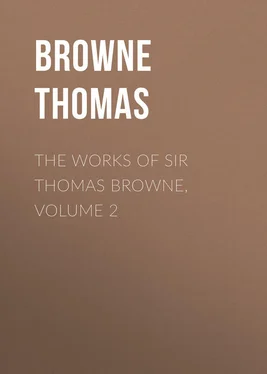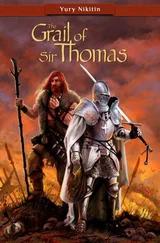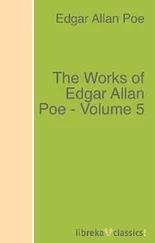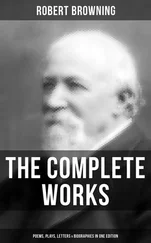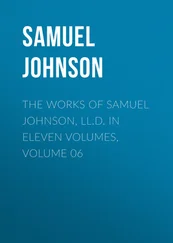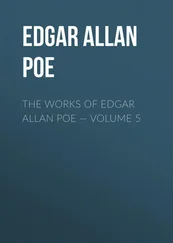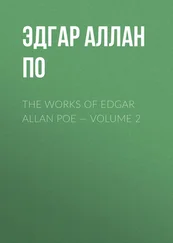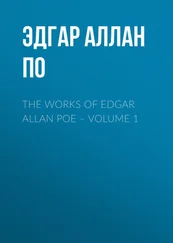Thomas Browne - The Works of Sir Thomas Browne, Volume 2
Здесь есть возможность читать онлайн «Thomas Browne - The Works of Sir Thomas Browne, Volume 2» — ознакомительный отрывок электронной книги совершенно бесплатно, а после прочтения отрывка купить полную версию. В некоторых случаях можно слушать аудио, скачать через торрент в формате fb2 и присутствует краткое содержание. ISBN: , Жанр: foreign_antique, foreign_prose, на английском языке. Описание произведения, (предисловие) а так же отзывы посетителей доступны на портале библиотеки ЛибКат.
- Название:The Works of Sir Thomas Browne, Volume 2
- Автор:
- Жанр:
- Год:неизвестен
- ISBN:http://www.gutenberg.org/ebooks/39961
- Рейтинг книги:5 / 5. Голосов: 1
-
Избранное:Добавить в избранное
- Отзывы:
-
Ваша оценка:
- 100
- 1
- 2
- 3
- 4
- 5
The Works of Sir Thomas Browne, Volume 2: краткое содержание, описание и аннотация
Предлагаем к чтению аннотацию, описание, краткое содержание или предисловие (зависит от того, что написал сам автор книги «The Works of Sir Thomas Browne, Volume 2»). Если вы не нашли необходимую информацию о книге — напишите в комментариях, мы постараемся отыскать её.
The Works of Sir Thomas Browne, Volume 2 — читать онлайн ознакомительный отрывок
Ниже представлен текст книги, разбитый по страницам. Система сохранения места последней прочитанной страницы, позволяет с удобством читать онлайн бесплатно книгу «The Works of Sir Thomas Browne, Volume 2», без необходимости каждый раз заново искать на чём Вы остановились. Поставьте закладку, и сможете в любой момент перейти на страницу, на которой закончили чтение.
Интервал:
Закладка:
The ground of this opinion, might be some sensible resistance of fire observed in the Salamander: which being, as Galen determineth, cold in the fourth, and moist in the third degree, and having also a mucous humidity above and under the skin, by vertue thereof it may a while endure the flame: which being consumed, it can resist no more. Such an humidity there is observed in Newtes, or Water-Lizards, especially if their skins be perforated or pricked. Thus will Frogs and Snails endure the Flame: thus will whites of Eggs, vitreous or glassie flegm extinguish a coal: thus are unguents made which protect a while from the fire: and thus beside the Hirpini there are later stories of men that have passed untoucht through the fire. And therefore some truth we allow in the tradition: truth according unto Galen , that it may for a time resist a flame, or as Scaliger avers, extinguish or put out a coal: for thus much will many humid bodies perform: but that it perseveres and lives in that destructive element, is a fallacious enlargement. Nor do we reasonably conclude, because for a time it endureth fire, it subdueth and extinguisheth the same, because by a cold and aluminous moisture, it is able a while to resist it: from a peculiarity of Nature it subsisteth and liveth in it.
It hath been much promoted by Stories of incombustible napkins and textures which endure the fire, whose materials are called by the name of Salamanders wool. Which many too literally apprehending, conceive some investing part, or tegument of the Salamander: wherein beside that they mistake the condition of this Animal (which is a kind of Lizard, a quadruped corticated and depilous, that is, without wool, fur, or hair) they observe not the method and general rule of nature; whereby all Quadrupeds oviparous, as Lizards, Frogs, Tortois, Chamelions, Crocodiles, are without hair, and have no covering part or hairy investment at all. And if they conceive that from the skin of the Salamander, these incremable pieces are composed; beside the experiments made upon the living, that of Brassavolus will step in, who in the search of this truth, did burn the skin of one dead.
Nor is this Salamanders wooll desumed from any Animal, but a Mineral substance Metaphorically so called from this received opinion. For beside Germanicus his heartSuetonius., and Pyrrhus his great Toe,Plutarch. which would not burn with the rest of their bodies, there are in the number of Minerals some bodies incombustible; more remarkably that which the ancients named Asbeston , and Pancirollus treats of in the Chapter of Linum vivum . Whereof by art were weaved Napkins, Shirts, and Coats, inconsumable by fire; and wherein in ancient times to preserve their ashes pure, and without commixture, they burnt the bodies of Kings. A Napkin hereof Pliny reports that Nero had, and the like saith Paulus Venetus the Emperour of Tartary sent unto Pope Alexander ; and also affirms that in some part of Tartary there were Mines of Iron whose filaments were weaved into incombustible cloth. Which rare Manufacture, although delivered for lost by Pancirollus , yet Salmuth his Commentator affirmeth, that one Podocaterus a Cyprian, had shewed the same at Venice ; and his materials were from Cyprus , where indeed Dioscorides placeth them; the same is also ocularly confirmed by Vives upon Austin , and Maiolus in his Colloquies. And thus in our days do men practise to make long-lasting Snasts for Lamps out of Alumen plumosum; and by the same we read in Pausanius , that there always burnt a Lamp before the Image of Minerva .
CHAPTER XV
Of the Amphisbæna
That the Amphisbæna, that is, a smaller kind of Serpent, which moveth forward and backward, hath two heads, or one at either extream, was affirmed first by Nicander , and after by many others, by the Author of the Book De Theriaca ad Pisonem , ascribed unto Galen ; more plainly Pliny , Geminum habet caput, tanquam parum esset uno ore effundi venenum : but Ælian most confidently, who referring the conceit of Chimera and Hydra unto Fables, hath set down this as an undeniable truth.
Whereunto while men assent, and can believe a bicipitous conformation in any continued species, they admit a gemination of principle parts, not naturally discovered in any Animal. True it is that other parts in Animals are not equal; for some make their progression with many legs, even to the number of an hundred, as Juli , Scolopendræ ; or such as are termed Centipedes : some fly with two wings, as Birds and many Insects, some with four, as all farinaceous or mealy-winged Animals, as Butterflies, and Moths: all vaginipennous or sheath-winged Insects, as Beetles and Dorrs. Some have three Testicles, as Aristotle speaks of the Buzzard; and some have four stomachs, as horned and ruminating Animals; but for the principle parts, the Liver, Heart, and especially the brains; regularly they are but one in any kind or species whatsoever.
And were there any such species or natural kind of animal, it would be hard to make good those six positions of body, which according to the three dimensions are ascribed unto every Animal: that is, infra , supra , ante , retro , dextrosum , sinistrosum : for if (as it is determined) that be the anterior and upper part, wherein the senses are placed, and that the posterior and lower part which is opposite thereunto, there is no inferiour or former part in this Animal; for the senses being placed at both extreams, doth make both ends anterior, which is impossible; the terms being Relative, which mutually subsist, and are not without each other. And therefore this duplicity was ill contrived to place one head at both extreams, and had been more tolerable to have setled three or four at one. And therefore also Poets have been more reasonable then Philosophers, and Geryon or Cerberus less monstrous than Amphisbæna .
Again, if any such thing there were, it were not to be obtruded by the name of Amphisbæna , or as an Animal of one denomination; for properly that Animal is not one, but multiplicious or many, which hath a duplicity or gemination of principal parts. And this doth Aristotle define, when he affirmeth a monster is to be esteemed one or many, according to its principle, which he conceived the heart, whence he derived the original of Nerves, and thereto ascribed many acts which Physitians assign unto the brain: and therefore if it cannot be called one, which hath a duplicity of hearts in his sense, it cannot receive that appellation with a plurality of heads in ours. And this the practice of Christians hath acknowledged, who have baptized these geminous births, and double connascencies with several names, as conceiving in them a distinction of souls, upon the divided execution of their functions; that is, while one wept, the other laughing; while one was silent, the other speaking; while one awaked, the other sleeping; as is declared by three remarkable examples in Petrarch , Vincentius and the Scottish History of Buchanan .
It is not denied there have been bicipitous Serpents with the head at each extream, for an example hereof we find in Aristotle , and of the like form in Aldrovandus we meet with the Icon of a Lizzard; and of this kind perhaps might that Amphisbæna be, the picture whereof Cassianus Puteus shewed unto the learned Faber . Which double formations do often happen unto multiparous generations, more especially that of Serpents; whose productions being numerous, and their Eggs in chains or links together (which sometime conjoin and inoculate into each other) they may unite into various shapes and come out in mixed formations. But these are monstrous productions, beside the intention of Nature, and the statutes of generation, neither begotten of like parents, nor begetting the like again, but irregularly produced, do stand as Anomalies in the general Book of Nature. Which being shifts and forced pieces, rather then genuine and proper effects, they afford us no illation; nor is it reasonable to conclude, from a monstrosity unto a species, or from accidental effects, unto the regular works of Nature.
Читать дальшеИнтервал:
Закладка:
Похожие книги на «The Works of Sir Thomas Browne, Volume 2»
Представляем Вашему вниманию похожие книги на «The Works of Sir Thomas Browne, Volume 2» списком для выбора. Мы отобрали схожую по названию и смыслу литературу в надежде предоставить читателям больше вариантов отыскать новые, интересные, ещё непрочитанные произведения.
Обсуждение, отзывы о книге «The Works of Sir Thomas Browne, Volume 2» и просто собственные мнения читателей. Оставьте ваши комментарии, напишите, что Вы думаете о произведении, его смысле или главных героях. Укажите что конкретно понравилось, а что нет, и почему Вы так считаете.
